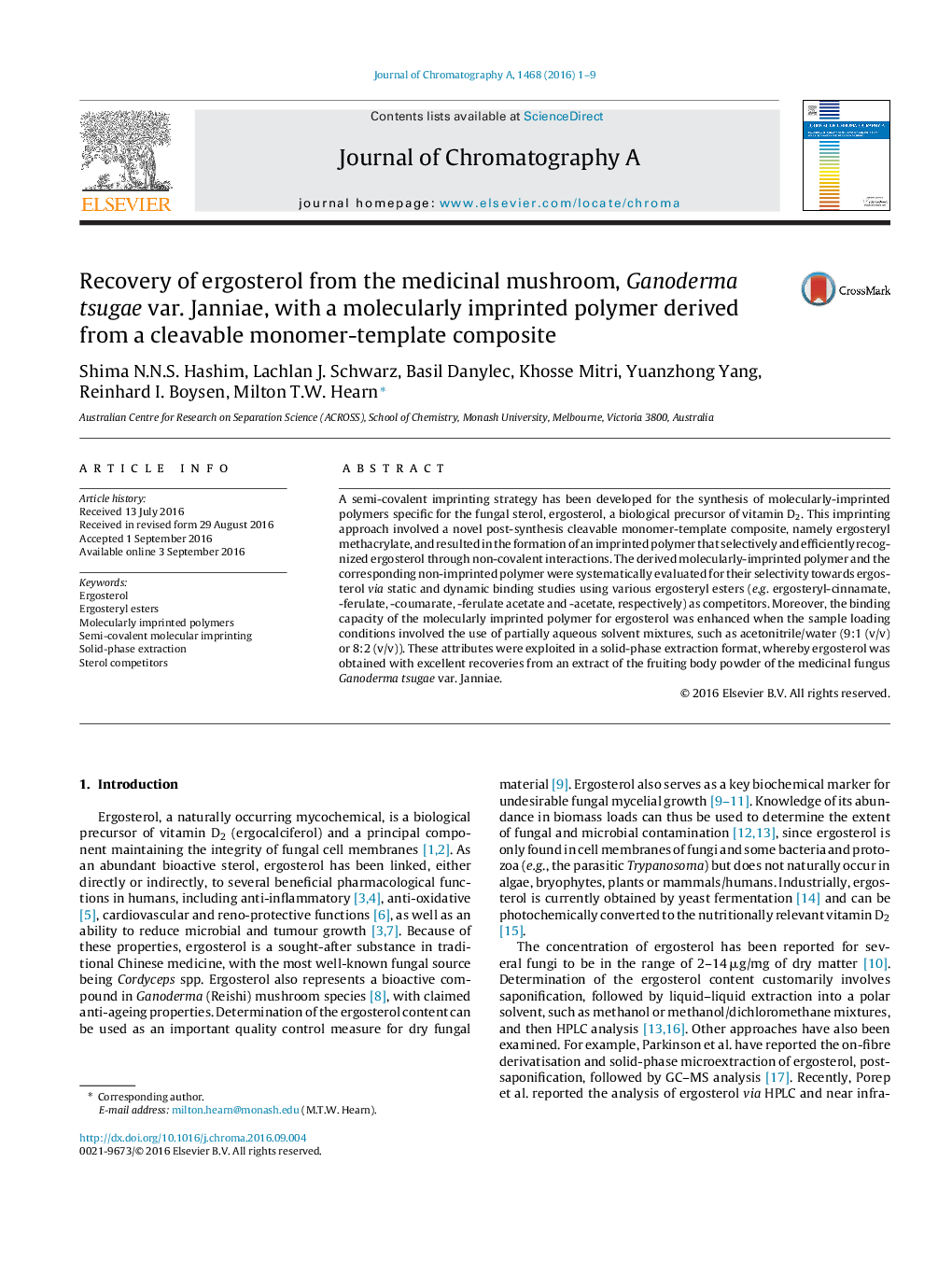| Article ID | Journal | Published Year | Pages | File Type |
|---|---|---|---|---|
| 5135858 | Journal of Chromatography A | 2016 | 9 Pages |
â¢A semi-covalent ergosterol molecular imprinting strategy has been established.â¢The ergosteryl methacrylate template-polymer composite readily converted to the MIP.â¢Ergosterol-MIP binding was enhanced with aqueous-organic solvent loading conditions.â¢Comparative studies showed higher ergosterol selectivity over other sterol analogues.â¢Rapid and preferential MISPE recovery of ergosterol from a mushroom extract documented.
A semi-covalent imprinting strategy has been developed for the synthesis of molecularly-imprinted polymers specific for the fungal sterol, ergosterol, a biological precursor of vitamin D2. This imprinting approach involved a novel post-synthesis cleavable monomer-template composite, namely ergosteryl methacrylate, and resulted in the formation of an imprinted polymer that selectively and efficiently recognized ergosterol through non-covalent interactions. The derived molecularly-imprinted polymer and the corresponding non-imprinted polymer were systematically evaluated for their selectivity towards ergosterol via static and dynamic binding studies using various ergosteryl esters (e.g. ergosteryl-cinnamate, -ferulate, -coumarate, -ferulate acetate and -acetate, respectively) as competitors. Moreover, the binding capacity of the molecularly imprinted polymer for ergosterol was enhanced when the sample loading conditions involved the use of partially aqueous solvent mixtures, such as acetonitrile/water (9:1 (v/v) or 8:2 (v/v)). These attributes were exploited in a solid-phase extraction format, whereby ergosterol was obtained with excellent recoveries from an extract of the fruiting body powder of the medicinal fungus Ganoderma tsugae var. Janniae.
